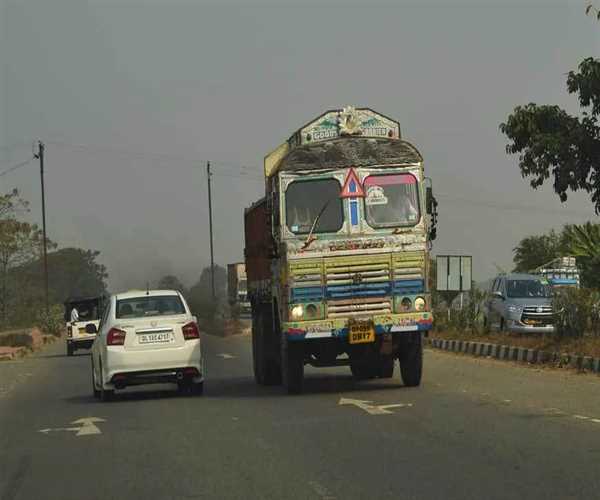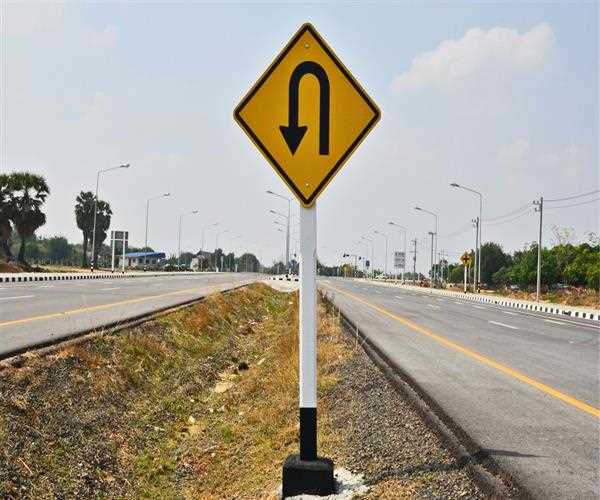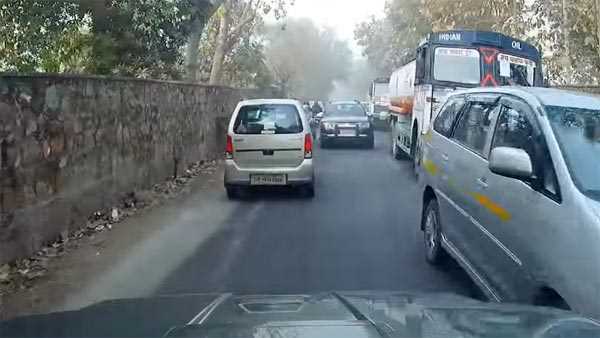
17-Jul-2023 , Updated on 7/18/2023 2:25:12 AM
Why do so many people in India prefer to drive on the wrong side
Highlights
- Lack of awareness- Many people in India are not aware of the dangers of driving on the wrong side of the road. They may not have been taught the correct way to drive, or they may not be aware of the laws in their country.
- Poor infrastructure- The roads in India are often in poor condition, which can make it difficult to see oncoming traffic. This can lead to people driving on the wrong side of the road in order to avoid obstacles or potholes.
- Reckless driving- Some people in India simply drive recklessly, and they do not care about the rules of the road. They may drive on the wrong side of the road because they are in a hurry, or because they think they can get away with it.
The dangers of driving on the wrong side
Head-on collisions- Driving on the wrong side of the road can lead to head-on collisions, which are often fatal.
Side-swipe collisions- Driving on the wrong side of the road can also lead to side-swipe collisions, which can cause serious injuries.
Difficult to see oncoming traffic- Driving on the wrong side of the road can make it difficult to see oncoming traffic, which can lead to accidents.
India, a land of diverse cultures and traditions, is also known for its unique traffic challenges. One such peculiarity is the prevalence of wrong-side driving, where motorists often drive on the wrong side of the road, contrary to traffic regulations. This phenomenon has puzzled many observers and sparked debates about its underlying causes.
Impatience and egotism are two primary attributes of 70-90% drivers in India.
Since I got my license about eight years ago, I have been driving cars. It's as if people don't care about the harm they cause to others by driving carelessly.
Exchanging lanes without sign, driving on off-base side of street just so that its simpler to do as such than going around and taking a U-Turn.

Since everyone in India does it, despite the high literacy rate in cities, it is just ingrained in people's minds that it is acceptable. The vast majority of them don't actually know the importance of street signs since they pay off the driving permit authorities. When the roads aren't crowded, I sometimes do it myself. It's simply Indian attitude, except if traffic police case the penalities and watching you, we cannot change ourselves.
Bikers and cars are most moronic on streets doing anything they wish and remember automobiles. Indians never change, and they even take pride in their reckless behavior because they are aware that no one will be there to punish them.
With that being said, there are a number of reasons why people drive on the wrong side in India including
Lack of awareness- Many people in India are not aware of the dangers of driving on the wrong side of the road. They may not have been taught the correct way to drive, or they may not be aware of the laws in their country. While the government has implemented traffic laws, enforcement and education about these laws are still relatively inadequate, particularly in rural areas. This knowledge gap results in many drivers being unaware of the correct driving practices, including the importance of driving on the right side of the road. Increasing awareness campaigns and driver education programs could help address this issue.
Poor infrastructure- The roads in India are often in poor condition, which can make it difficult to see oncoming traffic. This can lead to people driving on the wrong side of the road in order to avoid obstacles or potholes. Many Indian cities face issues of traffic congestion and limited road space, which often lead to chaotic traffic conditions. In the absence of well-defined lanes, drivers resort to taking shortcuts and driving on the wrong side to avoid traffic jams or reach their destinations more quickly. Insufficient infrastructure planning thus contributes to the prevalence of wrong-side driving.

Reckless driving- Some people in India simply drive recklessly, and they do not care about the rules of the road. They may drive on the wrong side of the road because they are in a hurry, or because they think they can get away with it. Excessive speeding is another prominent factor contributing to reckless driving. Many drivers disregard speed limits and engage in high-speed driving, driven by a desire to reach their destinations faster or an adrenaline rush. Speeding reduces a driver's ability to react promptly to hazards on the road, such as pedestrians, cyclists, or sudden obstacles. It greatly increases the severity of accidents and the chances of losing control of the vehicle, making it a dangerous form of reckless driving.
Behavioral Norms and Social Pressure- Social norms and peer pressure can influence driving behavior. In certain regions of India, wrong-side driving has become normalized, with drivers following the lead of others on the road. When a significant number of motorists drive on the wrong side, it creates a ripple effect where others may feel compelled to do the same to maintain the flow of traffic. This herd mentality perpetuates the prevalence of wrong-side driving in some areas.
Limited Traffic Enforcement- Inconsistent traffic enforcement is a significant contributing factor to the persistence of wrong-side driving in India. While traffic laws are in place, their implementation and enforcement vary across different regions. In some cases, lack of strict enforcement allows drivers to engage in wrong-side driving without facing immediate consequences. Strengthening traffic enforcement and imposing stricter penalties for violating traffic rules could deter motorists from driving on the wrong side.
Lack of Alternative Transportation Options- Inadequate public transportation infrastructure and services further contribute to wrong-side driving. In areas where public transport is limited or unreliable, individuals are more likely to rely on personal vehicles, exacerbating traffic congestion. To address this issue, investments in public transportation infrastructure, including buses, metro systems, and last-mile connectivity options, are crucial to providing viable alternatives to private vehicles.
But I would like to give some lessons to those who do reckless driving to hurt themselves and others
Driving on the wrong side of the road is a major traffic hazard. It can lead to head-on collisions, which are often fatal. It can also lead to side-swipe collisions, which can cause serious injuries. In addition, driving on the wrong side can make it difficult to see oncoming traffic, which can lead to accidents.
Some lessons to be learned because life is precious-
- Be aware of the rules of the road- Make sure that you know the correct way to drive in India. This includes knowing which side of the road you should be driving on.
- Pay attention to the traffic- Be aware of the other cars on the road, and make sure that you are driving on the correct side.
- Be careful of the road conditions- If the roads are in poor condition, be extra careful not to drive on the wrong side.
- Report wrong-side drivers- If you see someone driving on the wrong side of the road, report it to the police. This will help to keep everyone safe on the roads.
Solving this complex issue requires a multi-faceted approach involving improvements in infrastructure, increased awareness campaigns, stricter traffic enforcement, and investments in public transportation. By addressing these factors collectively, it is possible to promote safer and more responsible driving practices in India, reducing the prevalence of wrong-side driving and improving overall road safety. By raising awareness, enforcing the rules of the road, and improving the infrastructure, we can help to make India's roads safer for everyone.

SEO and Content Writer
I am Drishan vig. I used to write blogs, articles, and stories in a way that entices the audience. I assure you that consistency, style, and tone must be met while writing the content. Working with the clients like bfc, varthana, ITC hotels, indusind, mumpa, mollydolly etc. has made me realized that writing content is not enough but doing seo is the first thing for it.
Join Our Newsletter
Subscribe to our newsletter to receive emails about new views posts, releases and updates.
Copyright 2010 - 2026 MindStick Software Pvt. Ltd. All Rights Reserved Privacy Policy | Terms & Conditions | Cookie Policy